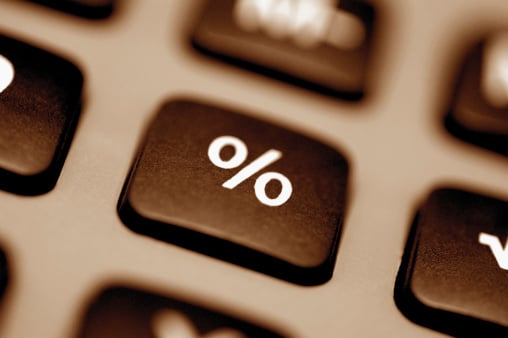Economy
Why the Fed May Be Losing Its Window to Raise Interest Rates
Published:
Last Updated:
Federal Reserve Chair Janet Yellen’s testimony made clear her intention to raise the federal funds rate target sometime this year. Numerous snippets from her speech say this explicitly. We can conclude that the Fed is at least intending to raise rates sometime in the next few months. Either that or it is intentionally misleading the public as to its intentions. Source: Thinkstock
Source: Thinkstock
Some of the more telling lines of Yellen’s testimony are that she expects currently low CPI inflation to be transitory and that, “If the economy evolves as we expect, economic conditions likely would make it appropriate at some point this year to rise the Federal funds rate target.”
But Yellen, and Vice Chair Stanley Fischer, may be losing the very opportunity they are waiting for to do so. To explain why, first let’s go a little deeper into the meaning of raising the federal funds rate target and how exactly this is accomplished.
ALSO READ: Cities With the Widest Gap Between the Rich and Poor
If interest rates in general are like a funnel, the tip of the funnel would be the federal funds rate, and the widest part of the funnel would be the rate on a 30-year Treasury bond. Interest rates start with the overnight federal funds rate. Contrary to how much of the media portrays the Federal Reserve, it is not a magical institution that can simply dictate interest rates on a whim. It does not order its member banks to lend at whatever rate dictatorially. The only thing it can do is buy assets from or sell assets to its member banks to either increase or decrease their supply of cash reserves.
If the Fed buys assets (usually bonds), it gives its banks cash in return, increasing their reserves, which encourages them to lower the rate at which they loan their reserves out to other banks to meet reserve requirements. If the Fed sells assets to its banks, the opposite happens. The Fed tweaks how much assets it buys from or sells to other banks in order to reach a federal funds rate target, a target that has to be continually monitored rather than dictated from On High.
But there are two problems with this that most other Fed watchers seem to be ignoring. First, there is the distinct possibility that the Fed has indeed little actual control over the fed funds rate anymore. How and why is that? Because the fed funds rate is used by banks to loan to one another overnight in order to meet reserve requirements set by the Fed. However, since 2008, the amount of excess reserves in the system is so gargantuan at $2.5 trillion that no bank would possibly need to borrow funds from another bank at a federal funds rate of anything higher than 0.25% in order to meet reserve requirements overnight.
ALSO READ: The 10 Most Oil-Rich States
And why 0.25%? Because that is the interest rate that the Fed pays banks to keep money in excess reserves. Since December 2008, the federal funds rate has oscillated between 0.05% and 0.24%. If it goes any higher than 0.25%, then banks will simply take money out of their own excess reserve stockpile rather than borrow it from another bank at a higher rate. Essentially, the Fed literally cannot raise the federal funds rate any higher than 0.25% without also raising the interest rate it pays on excess reserves.
The only other time the Fed had to contend with excess reserves was in 1936/37, when excess reserves were higher than its own balance sheet due to the loosening of monetary policy during the onset of the Great Depression. In order to lower these excess reserves, it raised reserve requirements, which severely shrank the money supply, which led to the recession of 1937. (See graph here.) In a word, the Fed has only been in this situation once before, and it led to a severe recession.
So while Fed may at least try to raise its target rate later this year, it may have a hard time doing so, and nobody knows what the effect of raising the rate it pays on excess reserves will have, because it never has actually done that.
Finally, with money stock growth already severely limited since peaking in April, the Fed may find itself on the cusp of another stock market decline, an environment into which it will be very reluctant to raise the fed funds rate target at all. The window of opportunity to even attempt this may be closing fast.
ALSO READ: 10 Cities Where Incomes Are Growing (and Shrinking) the Fastest
Are you ready for retirement? Planning for retirement can be overwhelming, that’s why it could be a good idea to speak to a fiduciary financial advisor about your goals today.
Start by taking this retirement quiz right here from SmartAsset that will match you with up to 3 financial advisors that serve your area and beyond in 5 minutes. Smart Asset is now matching over 50,000 people a month.
Click here now to get started.
Thank you for reading! Have some feedback for us?
Contact the 24/7 Wall St. editorial team.